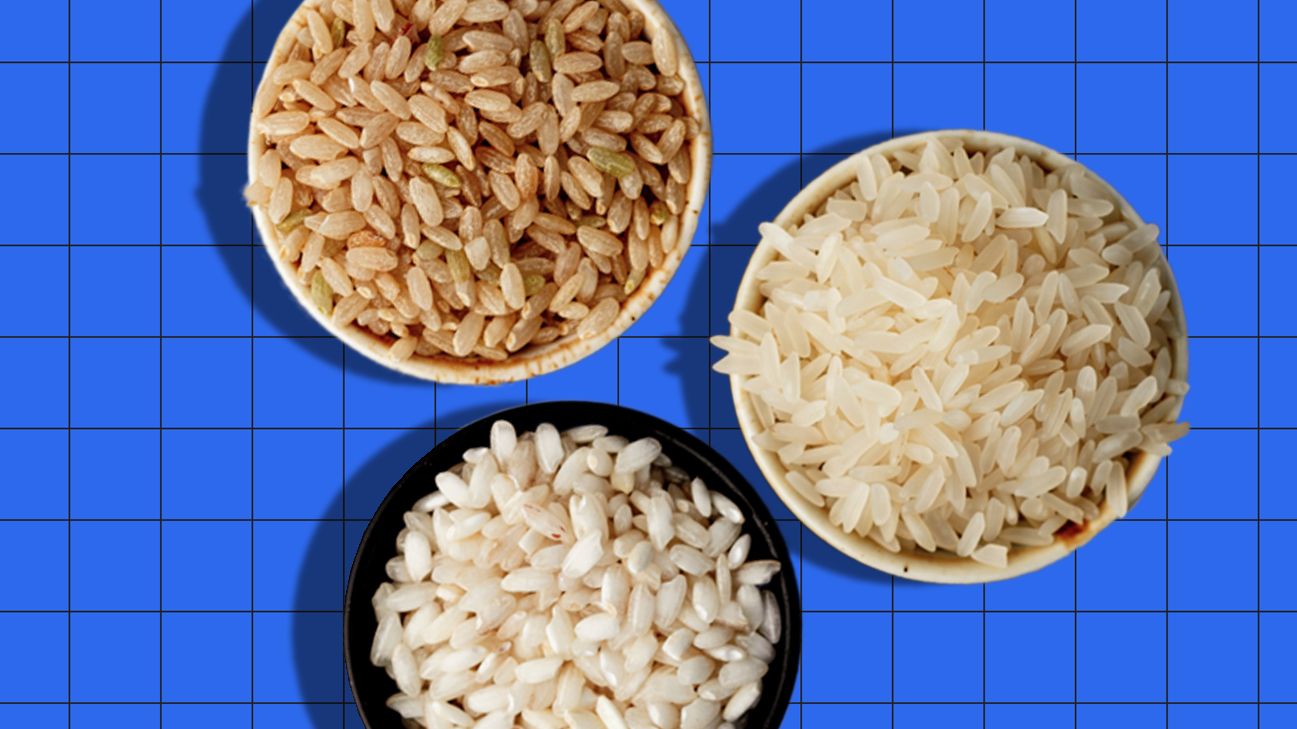To rinse or not to rinse: There are so many opinions and types of rice, the answer is daunting. Here, we break it down for you. Because like the answers to life’s most lofty questions, there is no easy single answer.

Some people believe that not rinsing yields rice with a sticky texture. Harold McGee, author of On Food and Cooking, is in this camp: “An initial rinsing of the dry rice removes surface starch and thus a source of added stickiness.” For most long-grain and medium-grain rice, then, rinsing is a good idea. But if you’re using short-grain white rice to make a risotto, no rinsing is necessary—the extra starch creates the essential creamy texture. When white rice is milled, the outer husk and bran layers are removed to produce translucent grains, but this also removes some vitamins and nutrients. To make milled white rice healthier, the United States requires processors to enrich it with vitamins and other nutrients, which appear as a dusty layer on the individual grains. If you want to also preserve those nutrients, washing is a no-no.
There was a time when all white rice was processed with talc, a mineral composed of hydrated magnesium silicate (sounds tasty, right?) to give it a whiter, cleaner appearance. Back then, rice needed a rinse to remove this talc. Most white rice grown in the U.S. is no longer milled that way, but some imported rices have been processed with talc, powdered glucose, or rice powder (all safe to eat, but still). Because of this, Beth Hensperger and Julie Kaufmann, authors of The Ultimate Rice Cooker Book, suggest leaving domestic rice as is, but rinsing imported rice (like jasmine and basmati) to improve the flavor and avoid the rice turning gluey. Most other recipes for Asian rice don’t call for rinsing, since a certain amount of stickiness is a good thing. Rather, they have you soak the rice before cooking.
It’s important to note that soaking rice is completely different from rinsing. Soaking gives the grains a head start on cooking and yields a better texture—it’s a common step in cooking basmati, which needs to be rinsed and soaked.
Greg Massa, owner of Massa Organics, a family farm in Northern California producing organic brown rice, notes that some people like rinsing brown rice to remove any bran dust before cooking. Bran dust doesn’t affect the rice as it cooks, so removing it (or not) is really more of a personal preference.
From here on out, I’ll take a pass on rinsing, but count me in on soaking Asian rices.
Use your newfound knowledge to make the best versions of these rice recipes:
Tired of the same ol’ rice pilaf? Here’s a way to use up that extra kimchi you have from some other dish and whip together an interesting, and totally satisfying meal that doesn’t take forever. It’s got that powerful tang coupled with a full-flavored savory essence that speaks for itself. Get our Kimchi and Shrimp Fried Rice recipe.
An oldie but a goodie. There’s nothing fancy about this classic dessert, but oh, is it good, hitting just the right notes of creamy and sweet comfort. Add raisins and cinnamon if you want, or keep it purely vanilla (literally). Get our Easy Rice Pudding recipe.
Wild rice takes a turn in the lovely Cajun dance of andouille sausage, shrimp, and peppers in this easy one-pot dish. You’ll need to get your Dutch oven for this one, or at least a heavy stew-type pot. Get our Wild Rice Jambalaya recipe.
Sweet and spicy, what a combo. Add savory to that flavor coupling, and pow! We’re done for. We’ve fallen in love with this dish, which means takeout can never happen again. Because there’s this. The knowledge can’t be undone. Get our Sweet Chile-Chicken Rice Bowl recipe.
Affectionately called rice balls in some circles, these Italian croquettes have many versions, some including spiced, ground meat in the middle too. Here, you use arborio rice, which is a short-grain Italian rice. The mozzarella and Parmesan make it so oozy and gooey-great. Sun-dried tomatoes and basil, yeah, they’re nice too. Get our Tomato-Basil Arancini recipe.
We have a fascination with stuffing ourselves with food stuffed into other food. Good thing the chain doesn’t continue farther up than that! Anyways, stuffed peppers are fun. Here’s a well-balanced meal all packed into a ruby jewelry box of sorts. Get our Stuffed Red Bell Peppers with Ground Chicken recipe.
Don’t let the Kabocha squash part of this recipe deter you. If you can’t find that particular squash, just go with butternut or acorn. You could even do frozen if it’s not the right season for it. This dish is too flavorful to miss. Get our Thai Red Curry with Kabocha Squash recipe.

